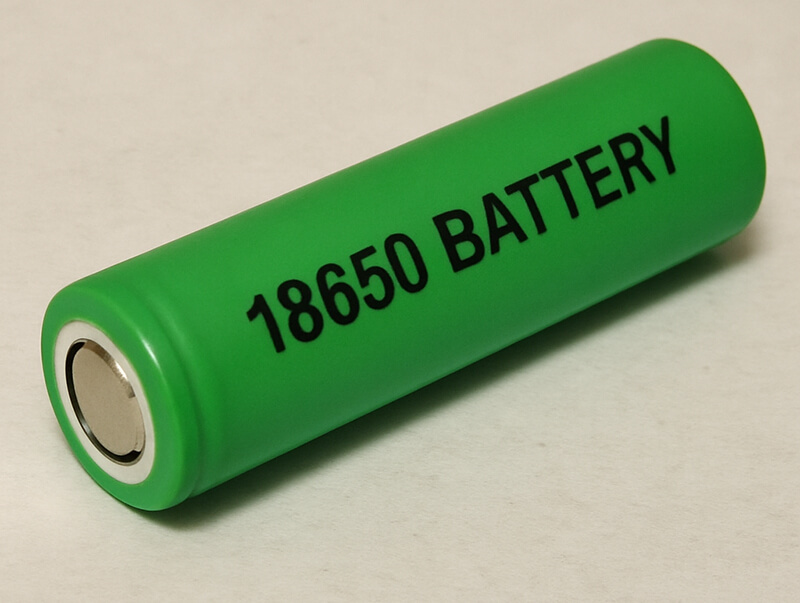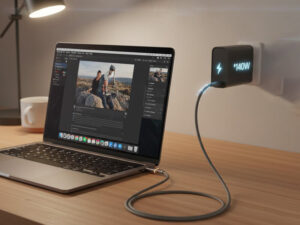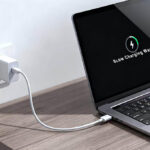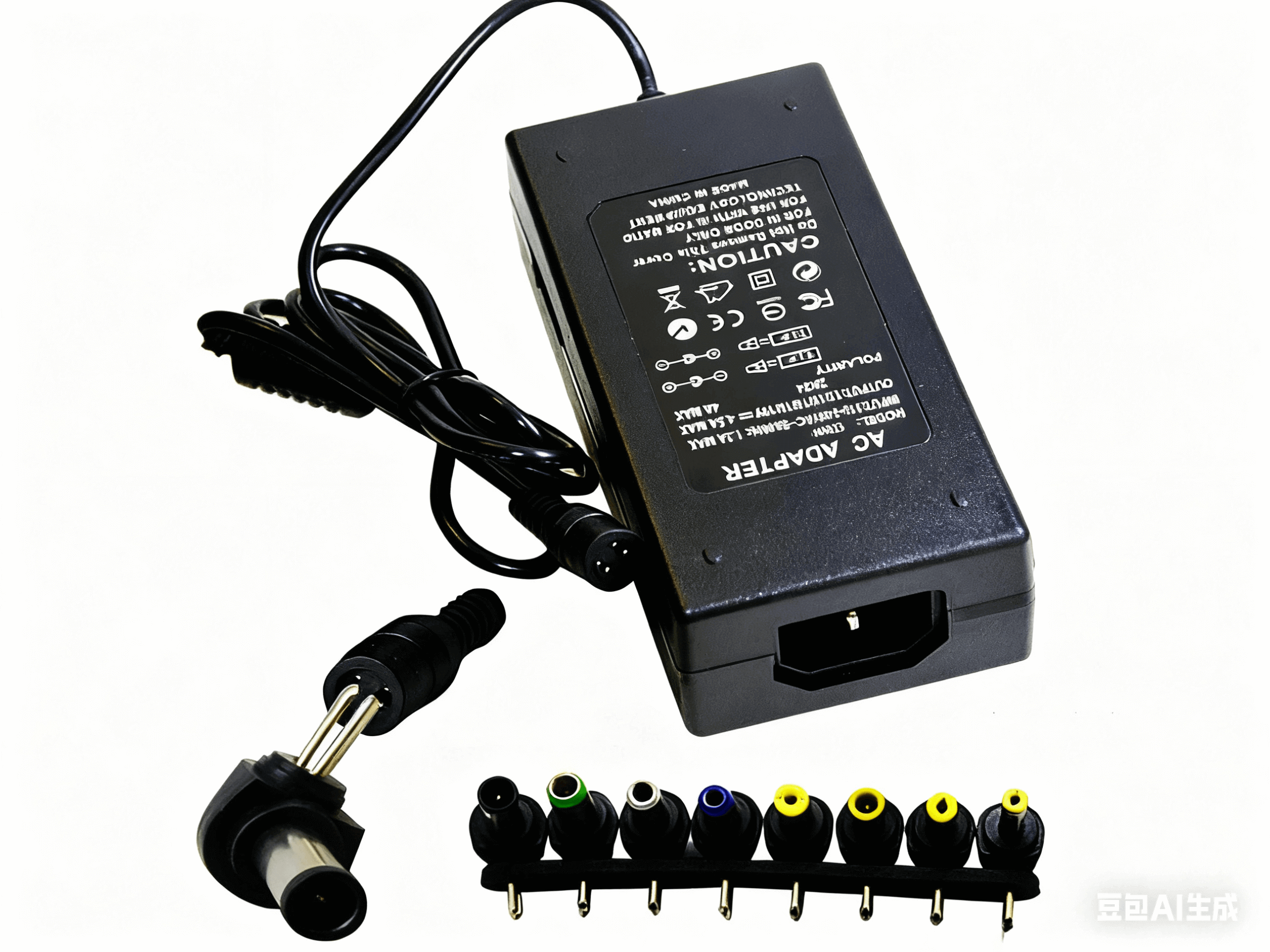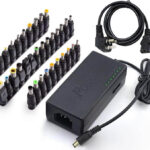Understanding the 18650 Battery Specifications
Understanding the 18650 battery specifications is crucial for anyone using modern electronics. These batteries power a wide range of devices, from laptops to electric vehicles.
The 18650 battery is a type of lithium-ion rechargeable battery. Its name comes from its dimensions: 18 mm in diameter and 65mm in length.
These batteries are popular for their high energy density and rechargeability. They are commonly used in the vaping community and DIY electronics projects.
18650 batteries come in various chemistries, including lithium-ion and lithium polymer. This variety allows them to meet different power needs.
They are available in both protected and unprotected versions. Protected batteries have a built-in circuit to prevent overcharging.
Understanding these specifications helps users select the right battery for their needs. Proper handling and storage are also crucial for safety.
In this guide, we will explore the key specifications, types, and applications of 18650 batteries.
What Is an 18650 Battery?
The 18650 battery is a lithium-ion rechargeable battery commonly used in various electronic devices. It is named after its size, which is 18 mm in diameter and 65 mm in length, making it a common size on the market.
These batteries are favored for their high energy density, which means they can store a lot of energy in a relatively small volume. They are versatile power sources that find uses in a variety of applications, from powering laptops to serving as the core of DIY electronics projects.
Key characteristics of 18650 batteries include:
- Rechargeability: They can be charged and discharged hundreds of times.
- Energy Density: High capacity makes them suitable for demanding tasks.
- Versatility: Used in devices like flashlights, electric vehicles, and more.
The continuous demand for higher capacity and efficiency makes 18650 batteries indispensable in modern technology.
18650 Battery Size and Dimensions
The 18650 battery derives its name from its distinct size dimensions. It measures 18mm in diameter and 65mm in length. This standardized size allows it to fit into a wide range of devices and applications.
Understanding the exact size of an 18650 battery is crucial for ensuring compatibility. Given its compact size, it offers a convenient power solution for portable and lightweight electronic devices. This makes it easy to use them in projects where space and weight are significant considerations.
Key features of the 18650 battery size include:
- Diameter: 18mm
- Length: 65mm
- Form factor: Cylindrical
These dimensions have become a standard in the rechargeable battery industry. As a result, manufacturers and hobbyists can rely on their uniformity when designing new electronics. Whether for home projects or professional gear, knowing the 18650 battery dimensions helps avoid fitting issues and enhances device performance.
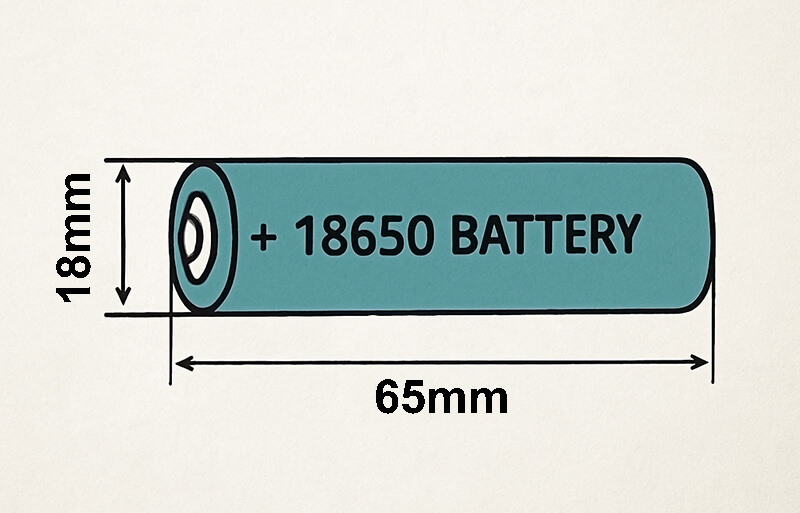
Key Specifications: Capacity, Voltage, and Discharge Rate
When selecting an 18650 battery, understanding key specifications is vital. Capacity, voltage, and discharge rate significantly impact performance and suitability for specific tasks.
Capacity is measured in milliamp-hours(mAh) and indicates how much energy the battery can store. It typically ranges from 1800mAh to 3500mAh. Higher capacity means longer use between chargers, making it ideal for energy-demanding applications.
Voltage of an 18650 battery is usually around 3.7 volts. This standard voltage is compatible with most devices designed to use 18650 cells, ensuring steady power delivery. Voltage consistency is crucial for the efficient functioning of electronic devices.
Capacity and voltage should match the requirements of your device. When selecting a battery, consider these specifications to ensure optimal performance.
Discharge rate refers to how quickly a battery can release stored energy. This is crucial for high-drain devices like power tools and e-cigarettes. Some 18650 batteries are designed for rapid discharge, making them ideal for these demanding applications.
Factors affecting discharge rate include:
- Battery chemistry
- Internal resistance
Recognizing how these specifications work together helps in choosing the right battery. With this knowledge, you can select an 18650 battery that best suits your device’s power needs, enhancing both performance and lifespan.
Types of 18650 Batteries: Chemistries and Configurations
18650 batteries come in various chemistries and configurations, each with distinct advantages. Understanding these differences helps in making an informed choice.
The most common chemistries for 18650 batteries include:
- Lithium-ion (Li-ion): Known for high energy density and long cycle life.
- Lithium polymer (LiPo): Offers a more flexible form factor and lightweight design.
- Lithium manganese oxide (LiMn2O4): Noted for thermal stability and rapid discharge.
Each chemistry impacts performance factors like capacity, durability, and safety. For instance, Li-ion cells are suitable for everyday electronics due to their energy density, while LiPo batteries are favored in applications needing lightweight components.
Configurations of 18650 batteries also vary. Some are flat-top, which is popular in battery packs, while others are button-top, used in consumer electronics like flashlights.
Choosing the right type involves considering your device’s power and compatibility requirements. Whether you prioritize energy density or form factor, having a sound understanding of these battery types supports optimal performance for your needs.
Protected vs. Unprotected 18650 Batteries
When choosing 18650 batteries, it’s essential to understand the difference between protected and unprotected versions. This choice affects safety and performance.
Protected 18650 batteries include a small built-in circuit. This circuit prevents overcharging, discharging, and overheating. They are ideal for use in standalone devices without built-in protection mechanisms.
On the other hand, unprotected 18650 batteries lack these safety features. They are usually used in battery packs where external safety controls are in place.
Key differences between the two:
o Protected Batteries: Built-in safety circuitry
o Suitable for standalone use
o Unprotected Batteries: No integrated safety features
o Typically used in controlled environments
Choosing the right type depends on the device’s own security features and the application scenario. Always put safety first, especially in devices without built-in protection features.
Common Applications of 18650 Batteries
18650 batteries are versatile and widely used in many electronic devices. Their high energy density makes them a favorite in power-hungry applications.
One common use is in flashlights. They provide long-lasting brightness and reliability, which is essential for outdoor or emergency situations. High-power devices such as vaporizers and power tools also rely on their powerful discharge capabilities.
18650 batteries are prevalent in various gadgets and projects, including:
- Laptops: Powering for prolonged use.
- Electric Vehicles: Offering efficient energy storage.
- LED Lighting Systems: Supporting long-duration lighting.
These batteries are also crucial in DIY electronics. Hobbyists appreciate their portability and easy integration. Beyond amateur use, they support vital components in renewable energy systems, ensuring a continuous power supply.
Their reliability and capacity make them indispensable across many industries and personal projects. As technology evolves, the range of their applications continues to expand.
How to Choose the Right 18650 Battery for Your Needs
Selecting the correct 18650 battery requires understanding your specific requirements. Each application may demand different features and specifications.
Firstly, determine the battery capacity you need. Higher capacity means longer battery life, which is crucial for applications like laptop batteries and high-drain devices. Check the battery voltage (usually around 3.7V) to ensure it meets the needs of your device.
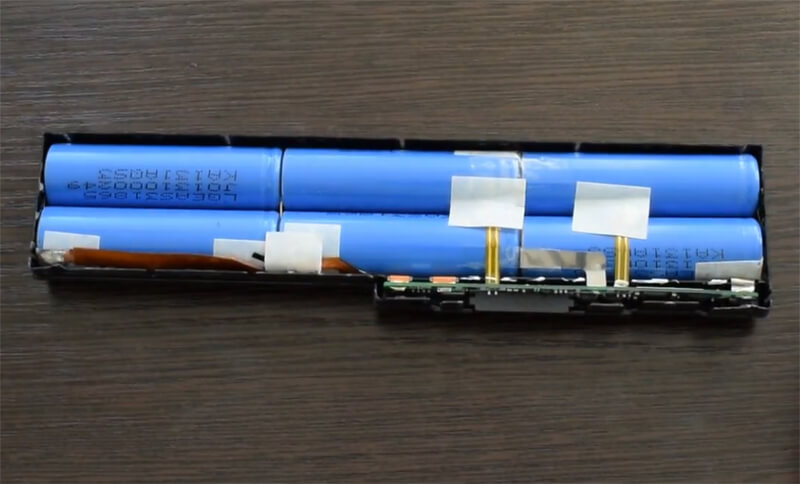
Consider the configuration as well. Are you using it in a single battery device or as part of a larger pack? Here’s a simple guide:
- Flat-Top: Used in custom packs and devices without battery compartments.
- Button-Top: Fits where a standard AA battery would be used.
Next, decide between protected and unprotected versions. For standalone applications or novice users, protected batteries offer built-in safety features like overcharger protection. However, experienced users might use the unprotected version in custom projects with external protection.
When choosing a brand, opt for reputable manufacturers known for quality. This ensures performance, safety, and longevity. Be wary of counterfeit products that could compromise your device and safety.
By focusing on these aspects, you can ensure compatibility and optimal performance for your needs, whether you’re building a custom project or upgrading an existing device.
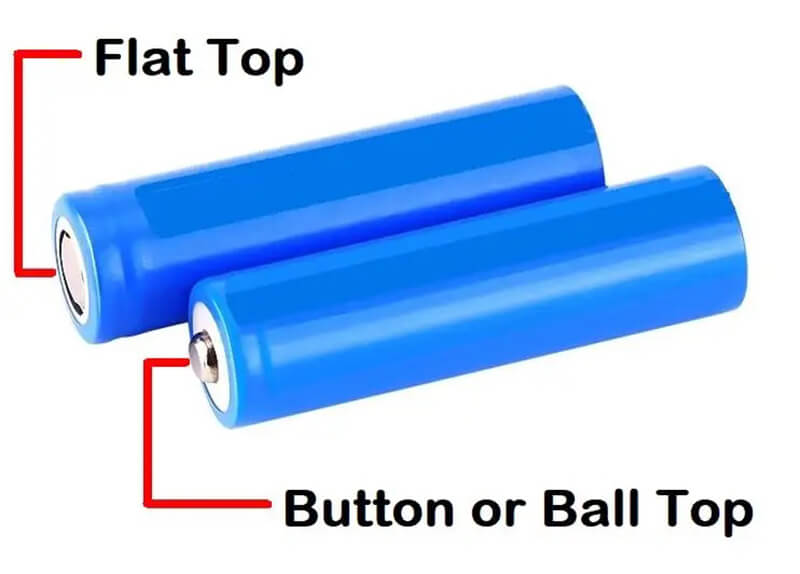
18650 Battery Packs and Custom Builds
18650 batteries are often used to create custom battery packs. This offers flexibility in designing power sources tailored to specific projects.
Building a battery pack involves wiring multiple cells together. It’s essential for applications needing higher voltage or increased capacity. Custom packs allow users to optimize power delivery based on unique requirements.
Considerations for creating custom builds include:
- Parallel Configurations: Increase overall capacity while maintaining voltage.
- Series Configurations: Increasing the voltage by stacking the voltage of each battery.
- Protection Circuits: Ensure safety by preventing overcharging and overheating.
Crafting a custom battery pack requires precision and safety protocols. Always ensure cells are matched in terms of capacity and discharge rate to prevent imbalance and potential hazards. Custom builds can be rewarding for tech enthusiasts needing versatile power solutions.
Safe Charging and Handling Practices
Charging and handling 18650 batteries with care is crucial to ensure safety. Improper charging can lead to reduced lifespan or safety hazards.
Use a charger specifically designed for 18650 batteries. This helps prevent overcharging, which can damage cells or cause overheating. Compatible chargers provide necessary protection.
Important safety tips include:
- Avoid Extremes: Don’t charge near flammable materials.
- Right Charger: Use the correct voltage and current settings.
- Monitoring: Regularly check the charging status.
Handle 18650 batteries with caution. Avoid dropping or exposing them to high temperatures or moisture. These practices keep batteries functioning optimally.
Implementing these practices enhances battery performance. It reduces risks associated with mishandling and improper charging techniques. Always prioritize safety when dealing with rechargeable cells.
Storage, Maintenance, and Lifespan
Proper storage and maintenance are vital to extend the lifespan of 18650 batteries. Store them in a cool and dry place to avoid damage. Extreme temperatures can negatively impact battery performance and longevity.
Follow these guidelines for storage:
- Temperature: Keep between 20-25°C (68-77°F).
- Avoid Full Discharge: Maintain around 40-60% charge during storage.
- Humidity: Store in a dry environment to prevent corrosion.
Regular maintenance will ensure your 18650 batteries last longer. Check the battery regularly for any signs of damage, such as swelling or corrosion. Appropriate care and attention to detail help maintain efficient battery function over time. Employ these practices to maximize battery effectiveness and lifespan.
Where to Buy 18650 Batteries: Tips and Best Practices
Purchasing 18650 batteries from reputable sources is critical to ensure their quality and safety. Numerous online and physical retailers offer these batteries, but choosing the right seller is important.
Here are some tips for finding reliable sellers:
- Reputation: Choose well-reviewed retailers.
- Certification: Look for authorized distributors.
- Warranty: Ensure the availability of a product guarantee.
When buying in bulk, verify the authenticity of the batteries to avoid counterfeits. Check the seller’s return policy in case you receive faulty products.
For the best results, consider these practices:
- Online Shops: Websites like Amazon are popular.
- Specialty Stores: Electronics and hardware stores often stock reliable brands.
- Manufacturer Direct: Buy directly from manufacturers when possible.
If you need to buy laptop batteries, you can consult HTJ International Co., Limited, a factory from China, focusing on the R&D and production of laptop batteries and laptop adapters.
Following these guidelines helps secure high-quality batteries that perform well and last longer.
Spotting Genuine vs. Counterfeit 18650 Batteries
Identifying authentic 18650 batteries is crucial for both safety and performance. Counterfeit batteries can lead to inadequate performance and possible hazards.
Here are some signs of counterfeit batteries:
- Inconsistent Branding: Misspellings or mismatched logos.
- Low Price: Prices significantly lower than the market.
- Physical Flaws: Uneven surfaces or improper dimensions.
To ensure authenticity, always buy from a reputable retailer or directly from the manufacturer. Familiarize yourself with the typical appearance and branding of known battery brands to spot irregularities. This vigilance protects you from inefficient and potentially dangerous products.
Recycling and Proper Disposal of 18650 Batteries
Proper disposal of 18650 batteries is vital for environmental safety. These batteries can release harmful chemicals if discarded improperly. Make sure to recycle used batteries instead of throwing them away.
Here’s how you can dispose of them correctly:
- Use designated recycling facilities for lithium batteries.
- Follow local guidelines for battery recycling.
- Check if retailers offer take-back programs.
By recycling, you help conserve valuable materials and reduce environmental harm. Always look for authorized centers to ensure batteries are disposed of safely and efficiently.
Frequently Asked Questions About 18650 Batteries
Many users have common queries about 18650 batteries. Understanding these questions can help users make informed choices. Here are a few frequently asked questions:
Q: Are all 18650 batteries the same size?
A: Yes, they share a standard size of 18mm by 65mm. However, some slight variations may exist.
Q: Can I use an 18650 battery in any device?
A: Ensure compatibility by checking the device specifications. Not all devices are designed for 18650 batteries.
Q: How do I safely charge an 18650 battery?
A: Always use a compatible charger and monitor the charging process. Avoid overcharging to protect the battery’s lifespan.
Conclusion: Making the Most of Your 18650 Batteries
Understanding the specifications of 18650 batteries is crucial for effective usage. These batteries power many devices and offer high energy density and reliability. By selecting the correct battery and following safe handling practices, users can optimize performance.
Purchasing from reputable sources ensures quality, while understanding different battery types can prevent misuse. When properly maintained, these batteries serve as a durable and efficient power solution. Whether for DIY projects or everyday devices, 18650 batteries present a versatile and robust choice.

